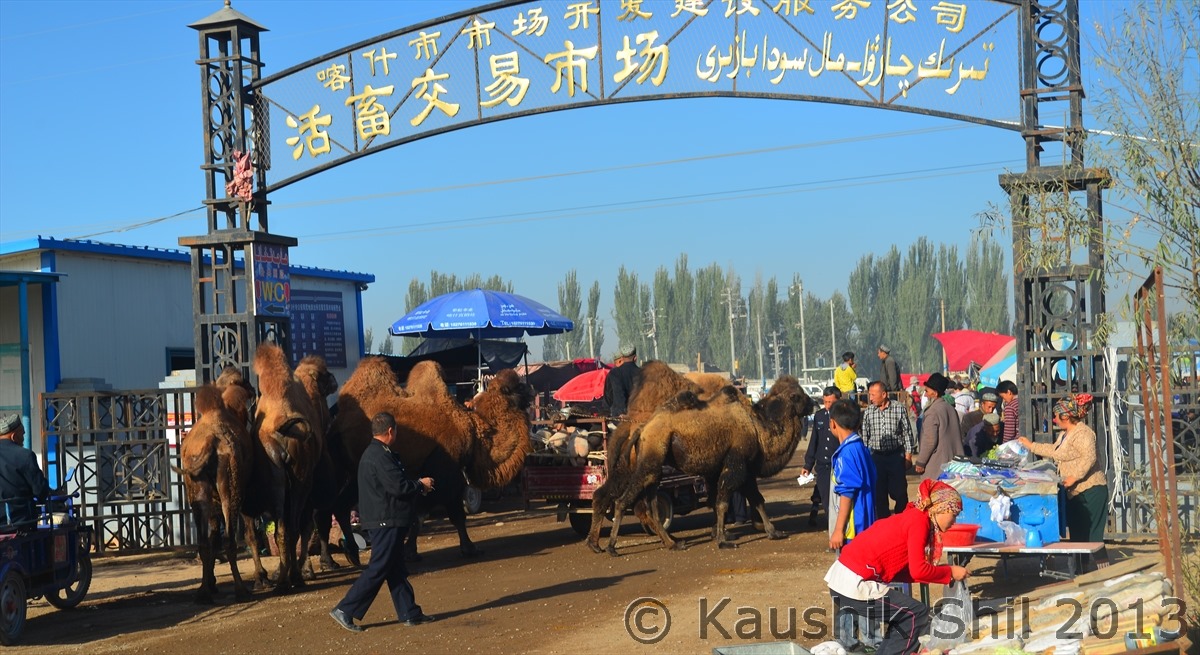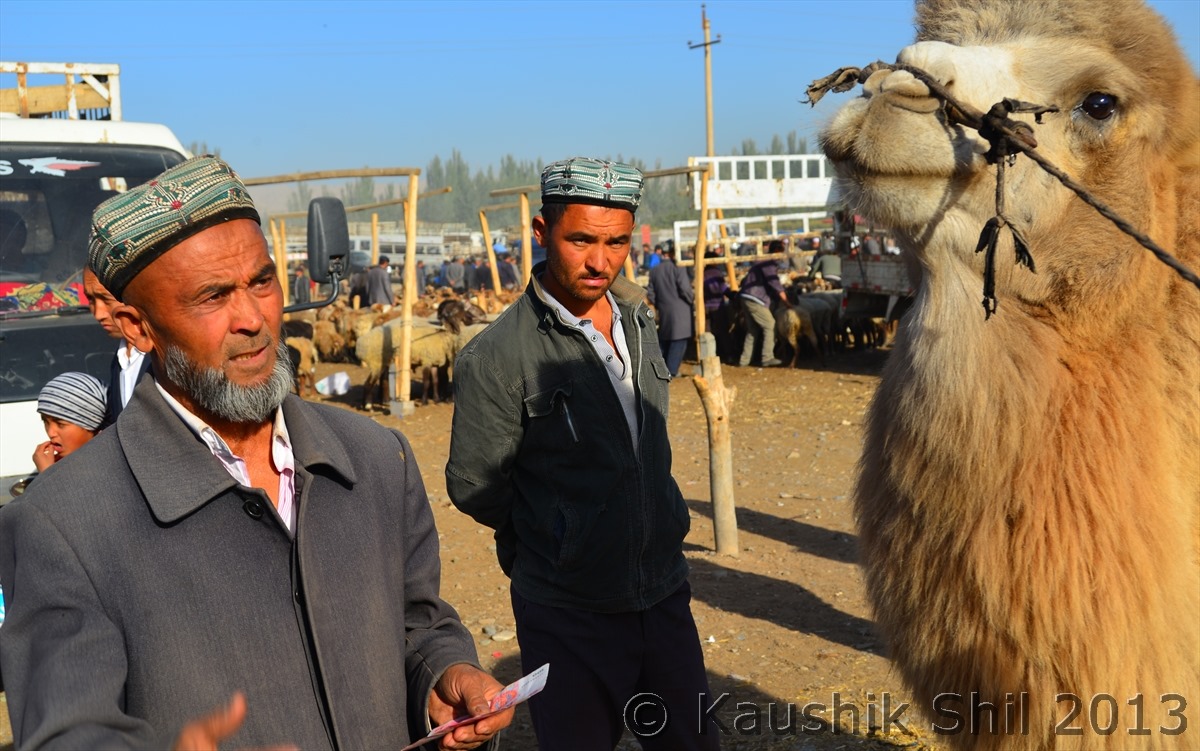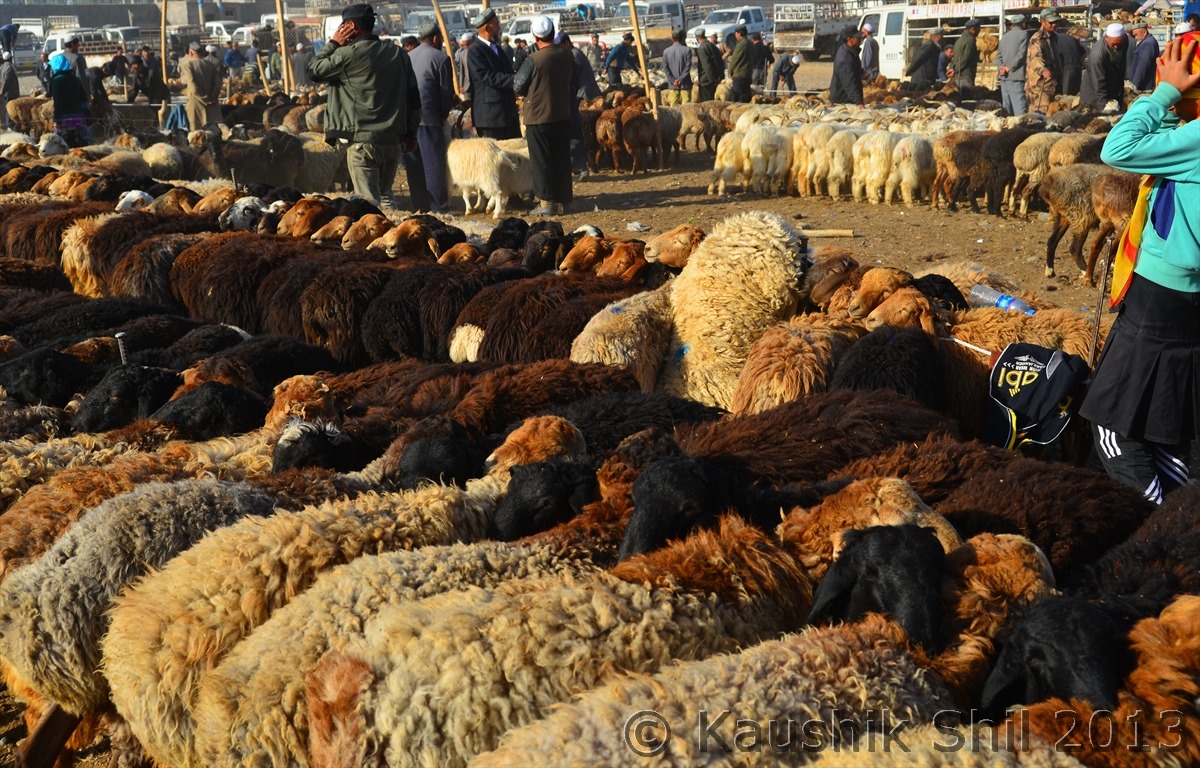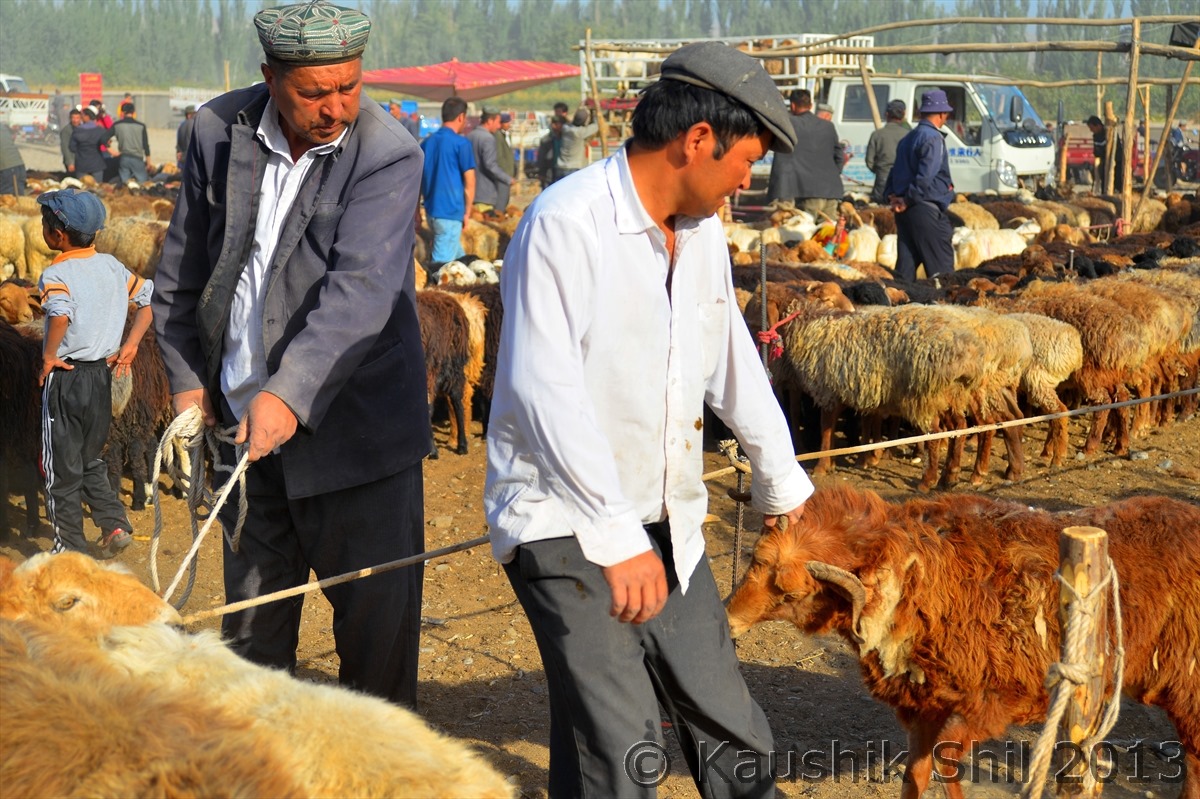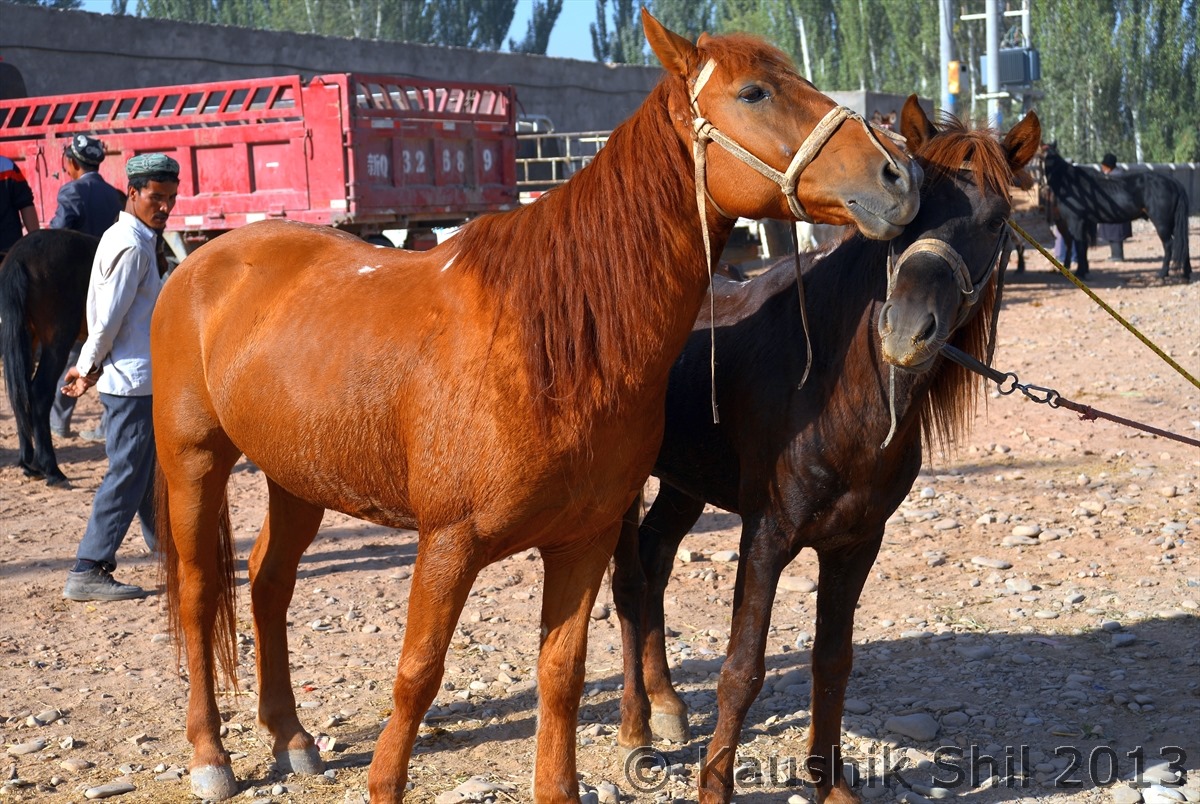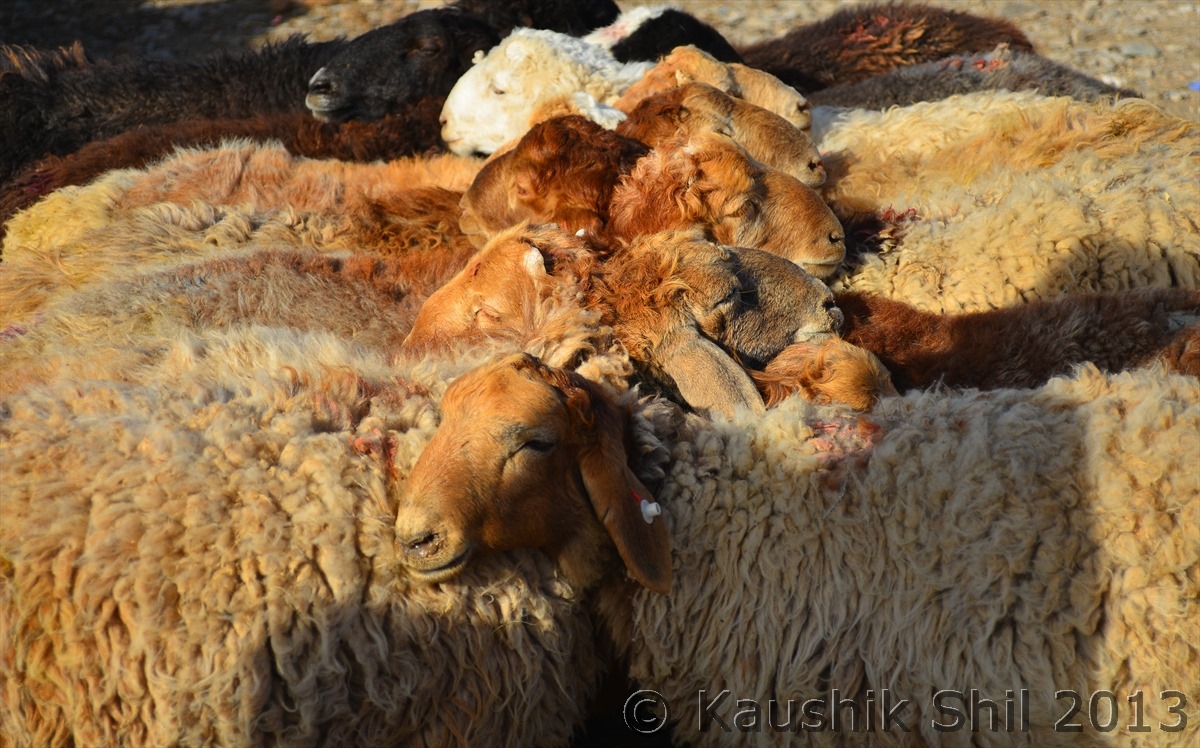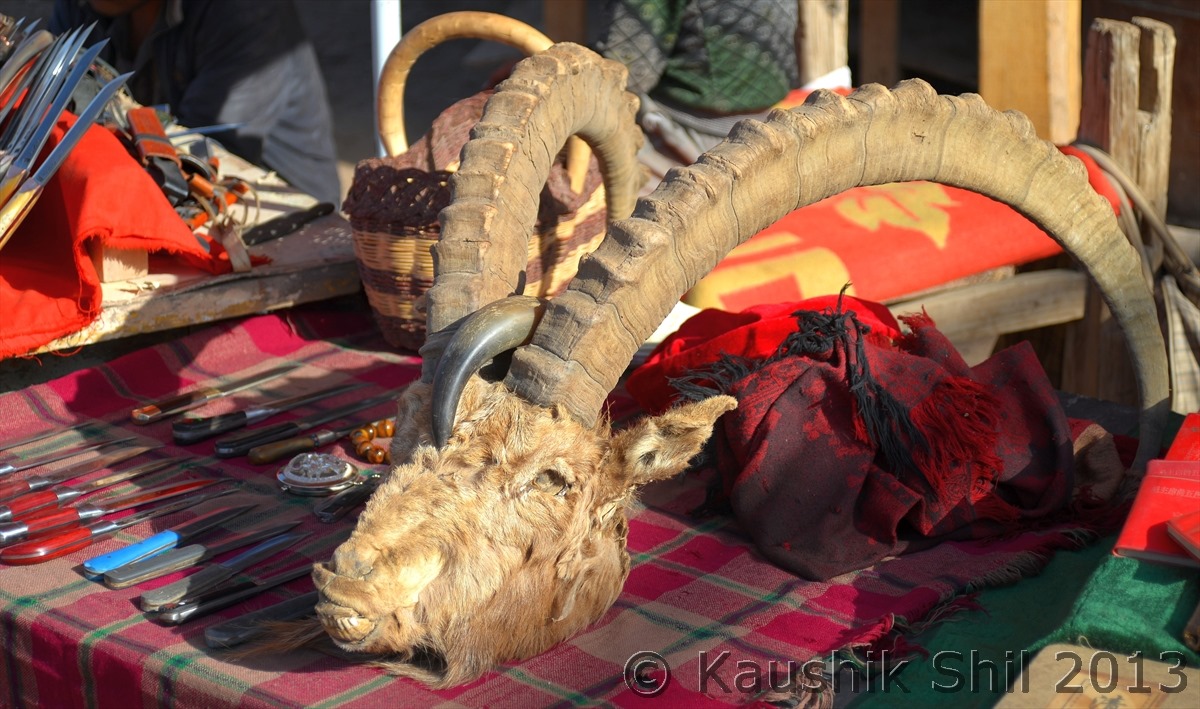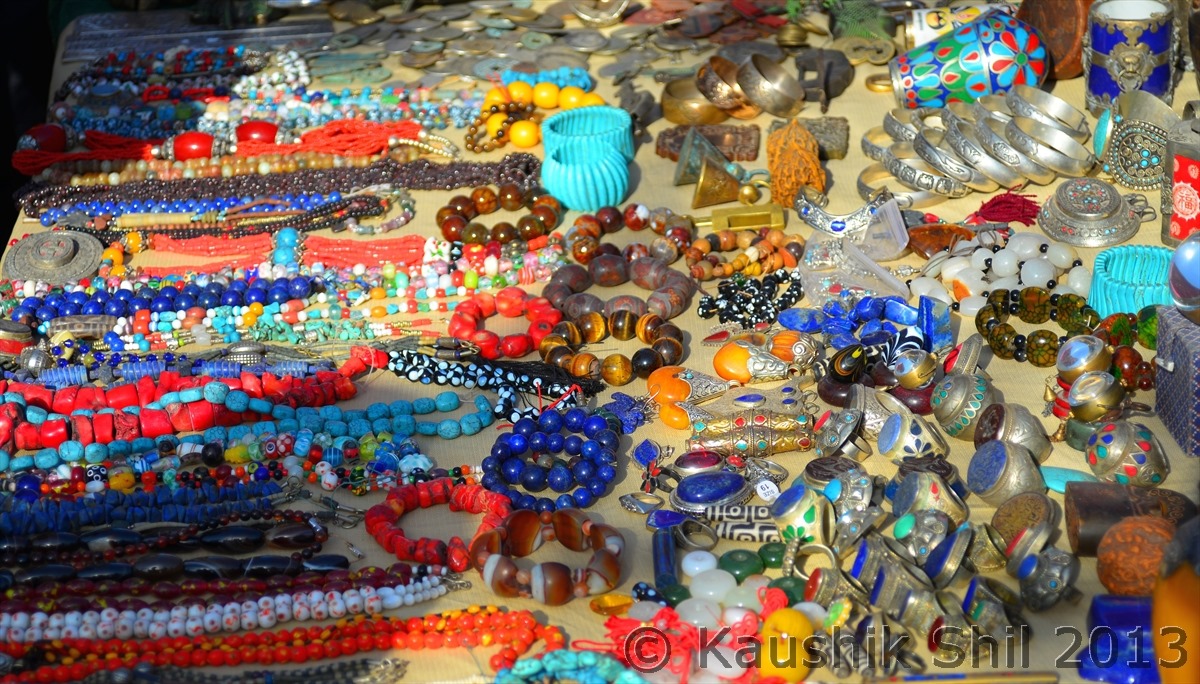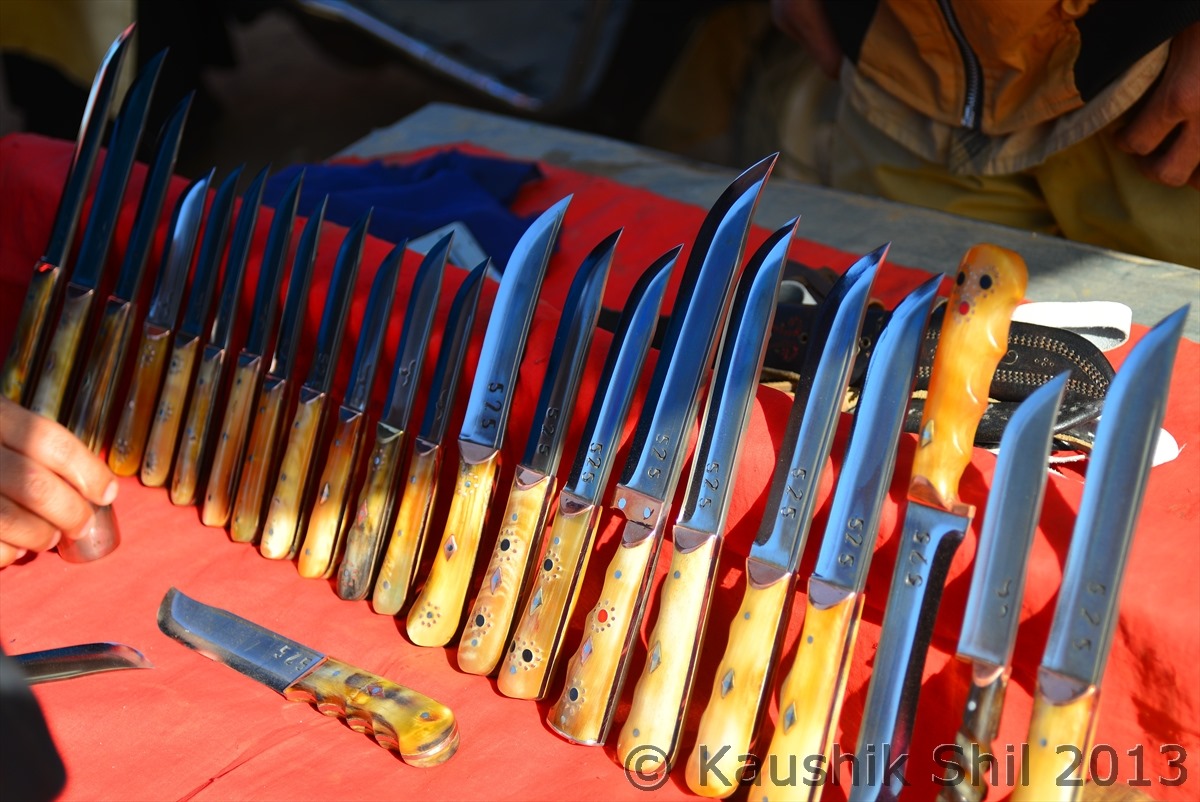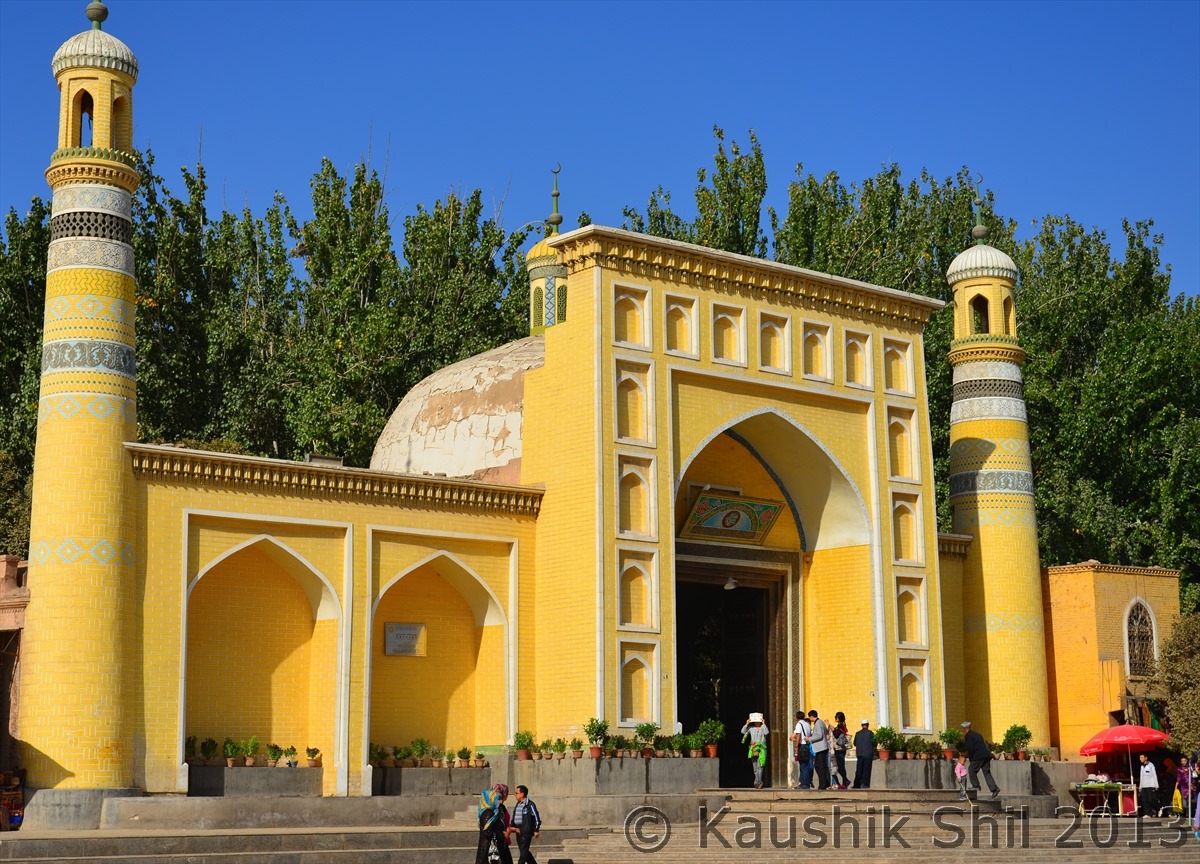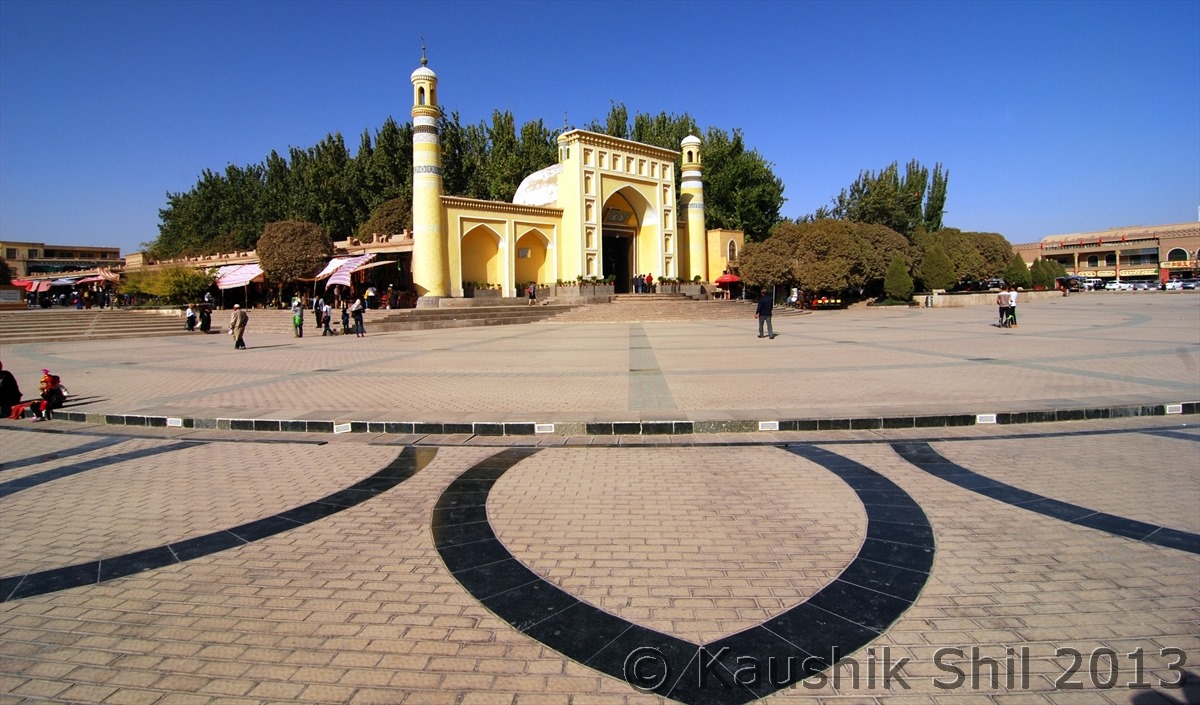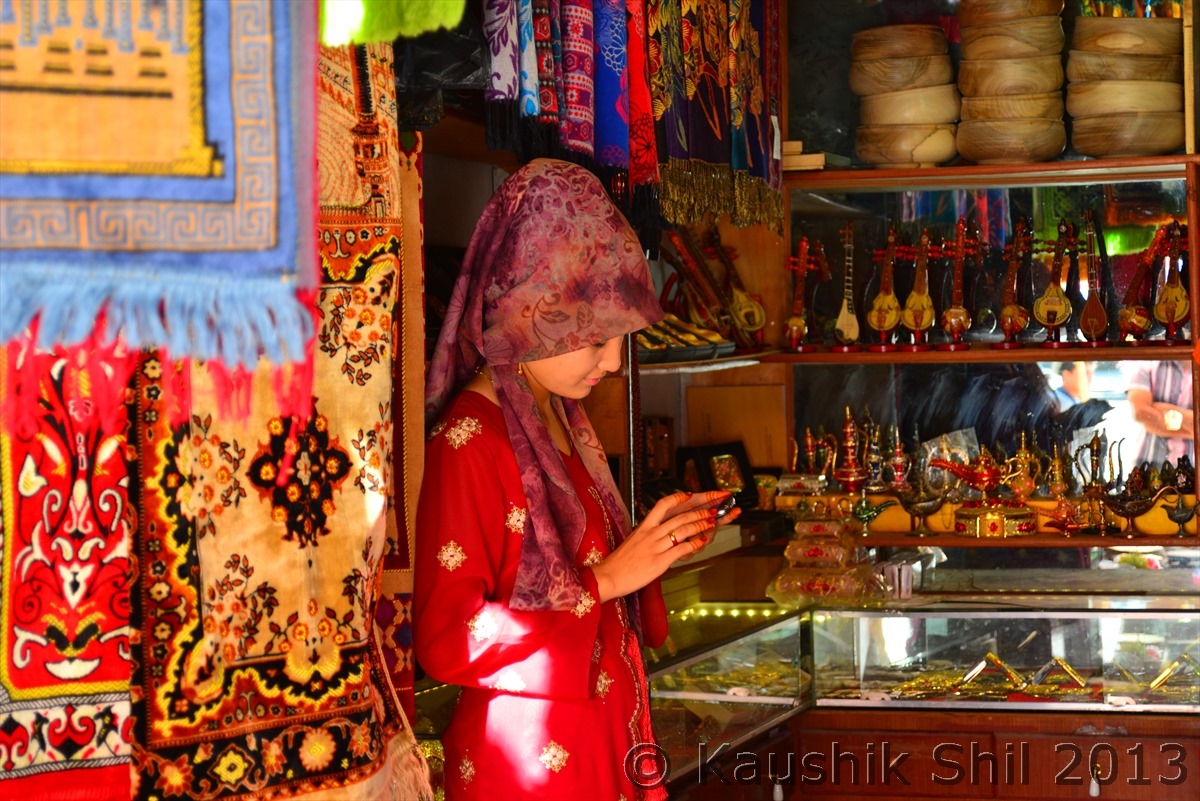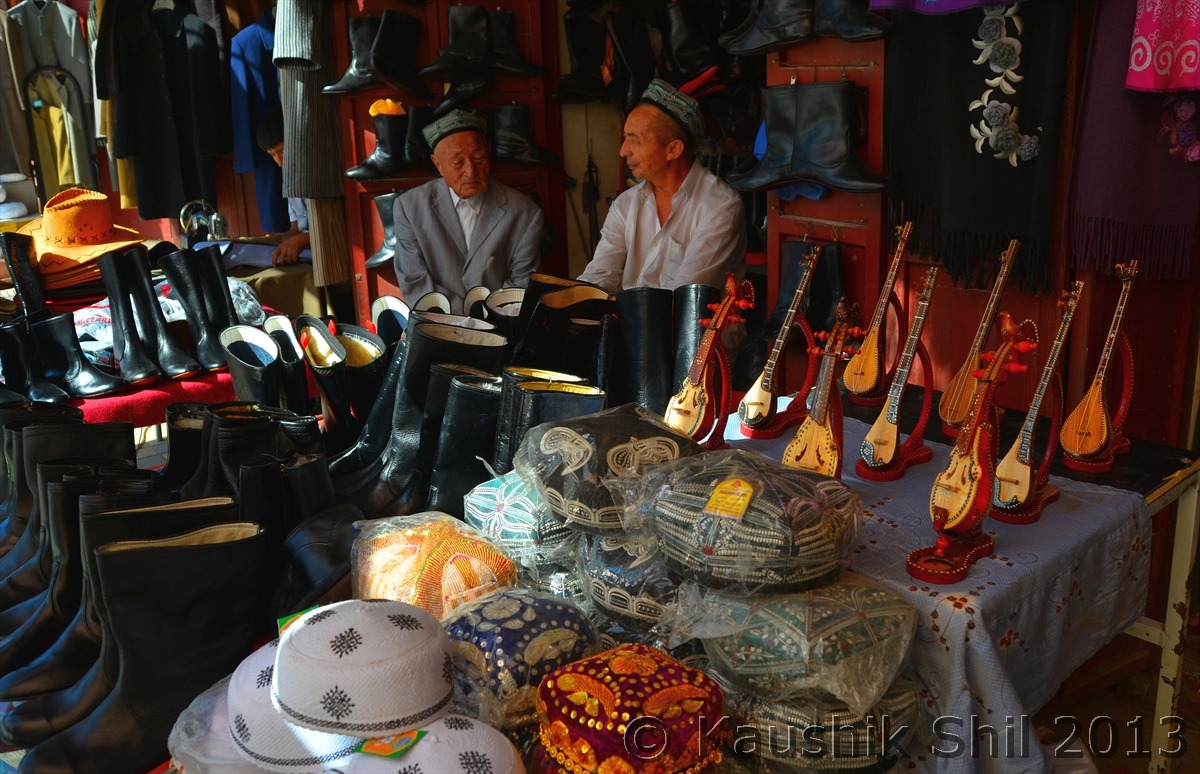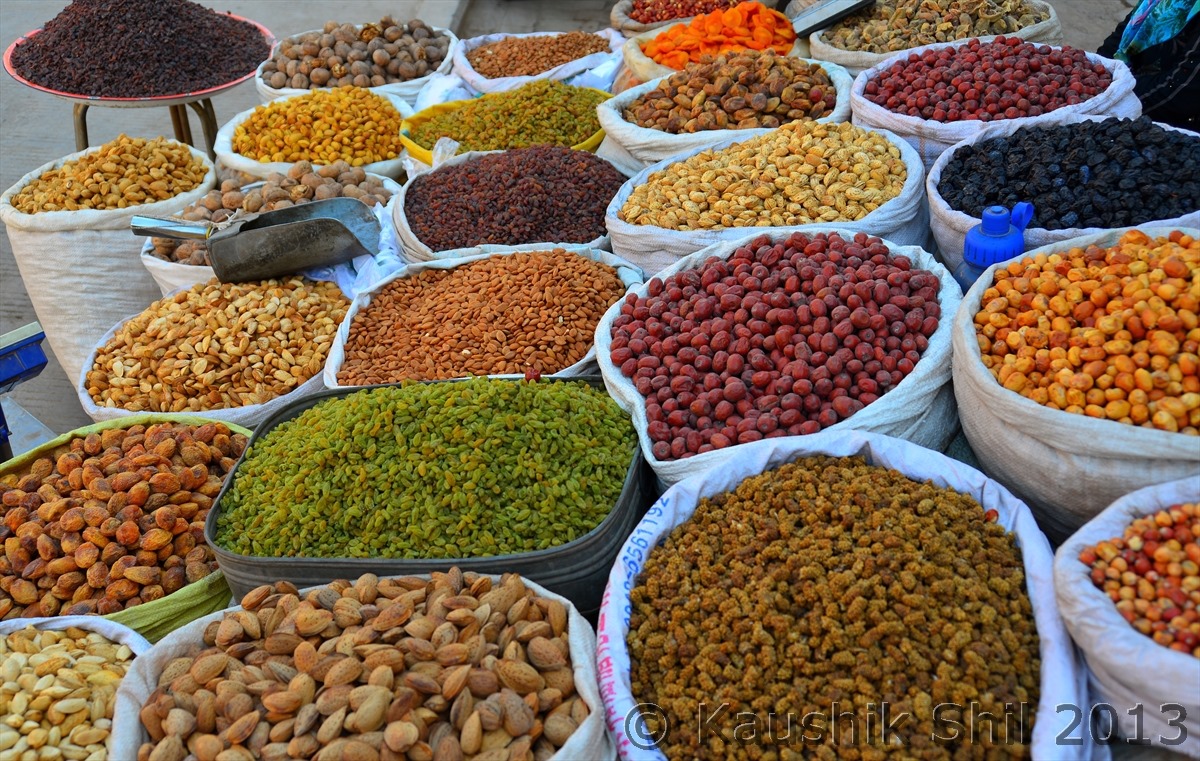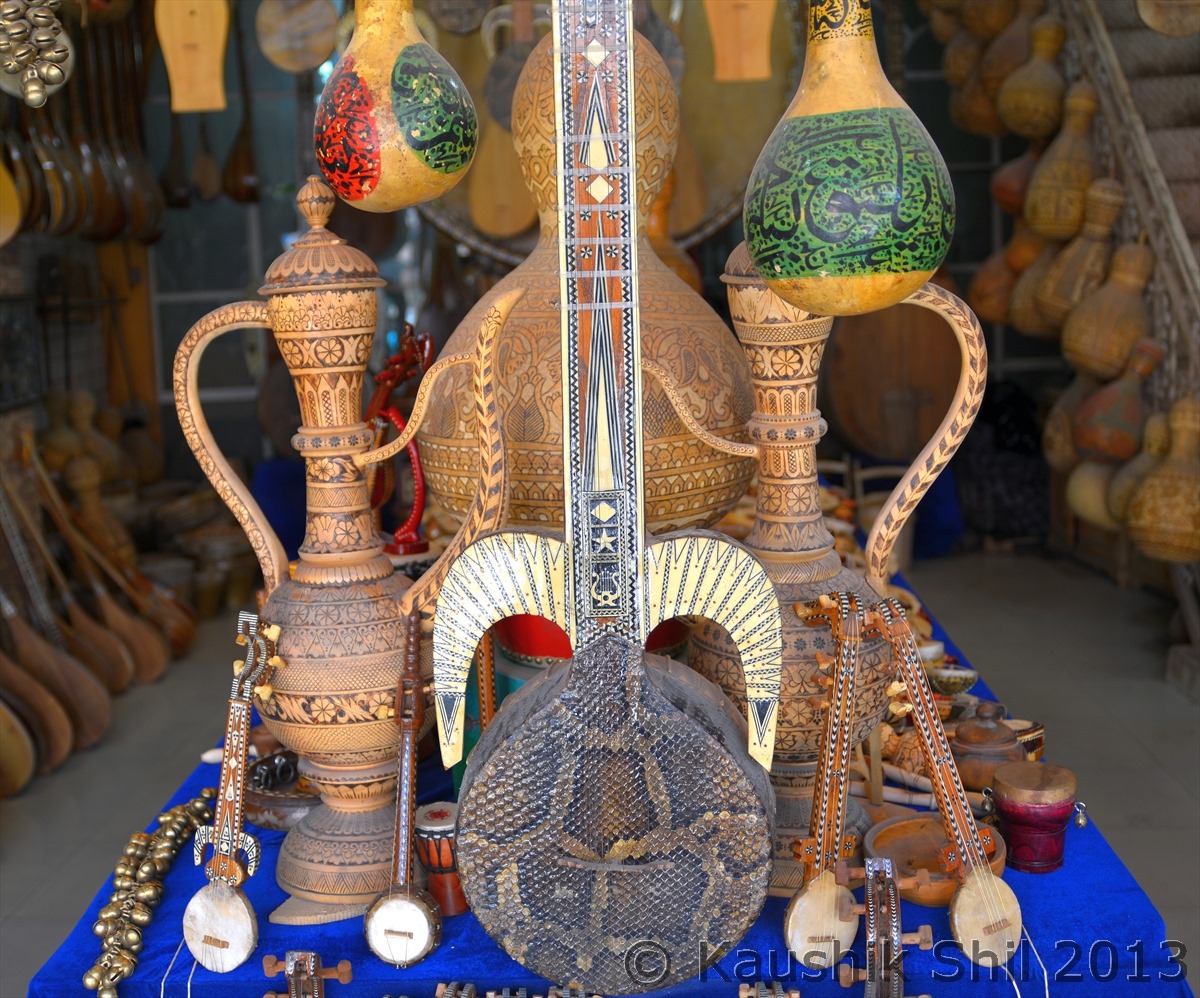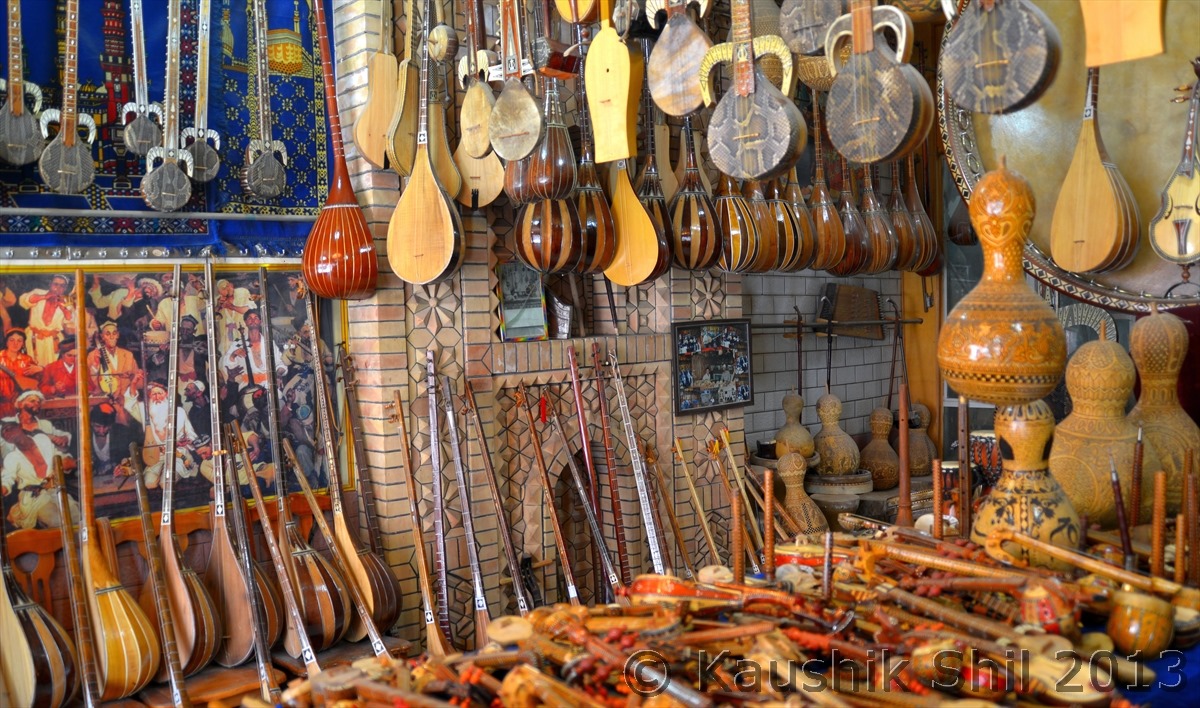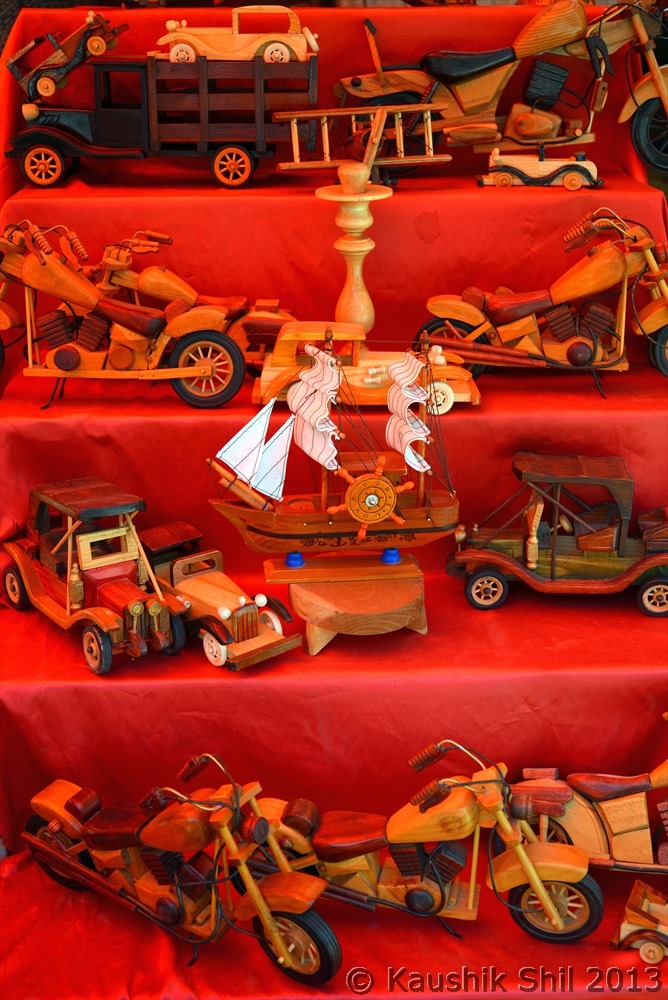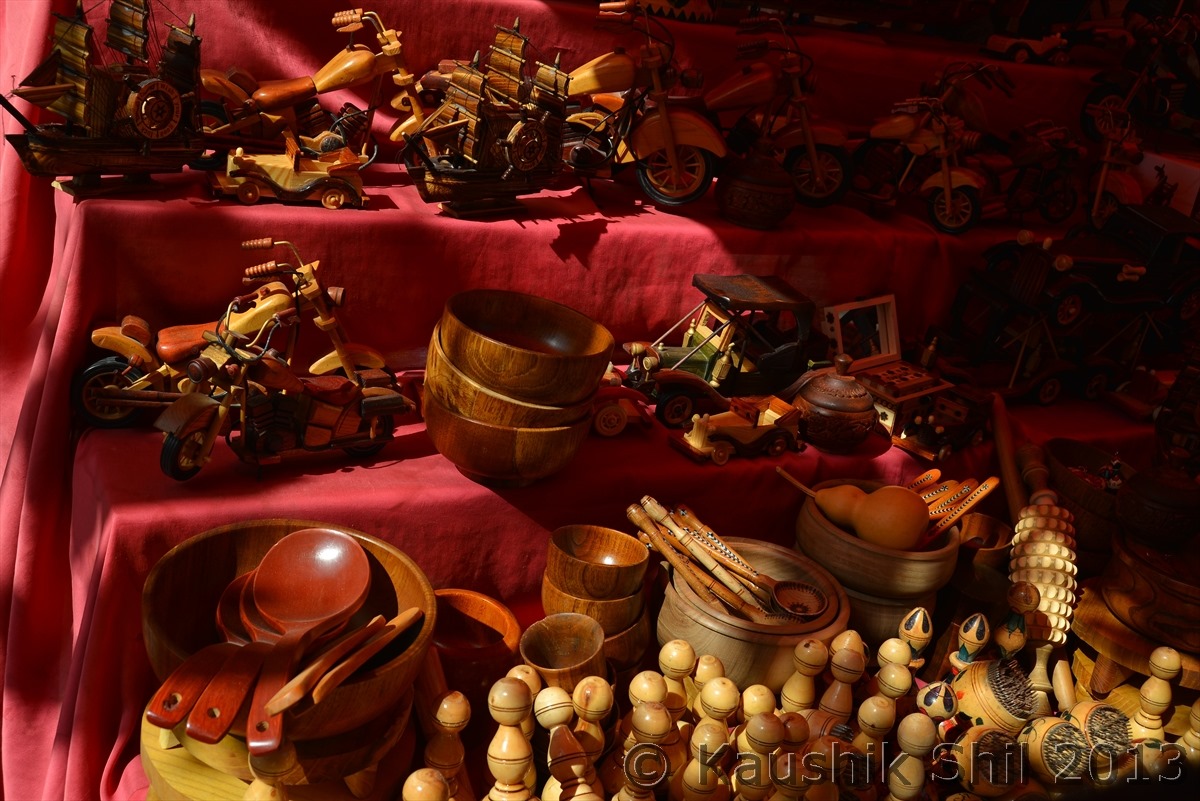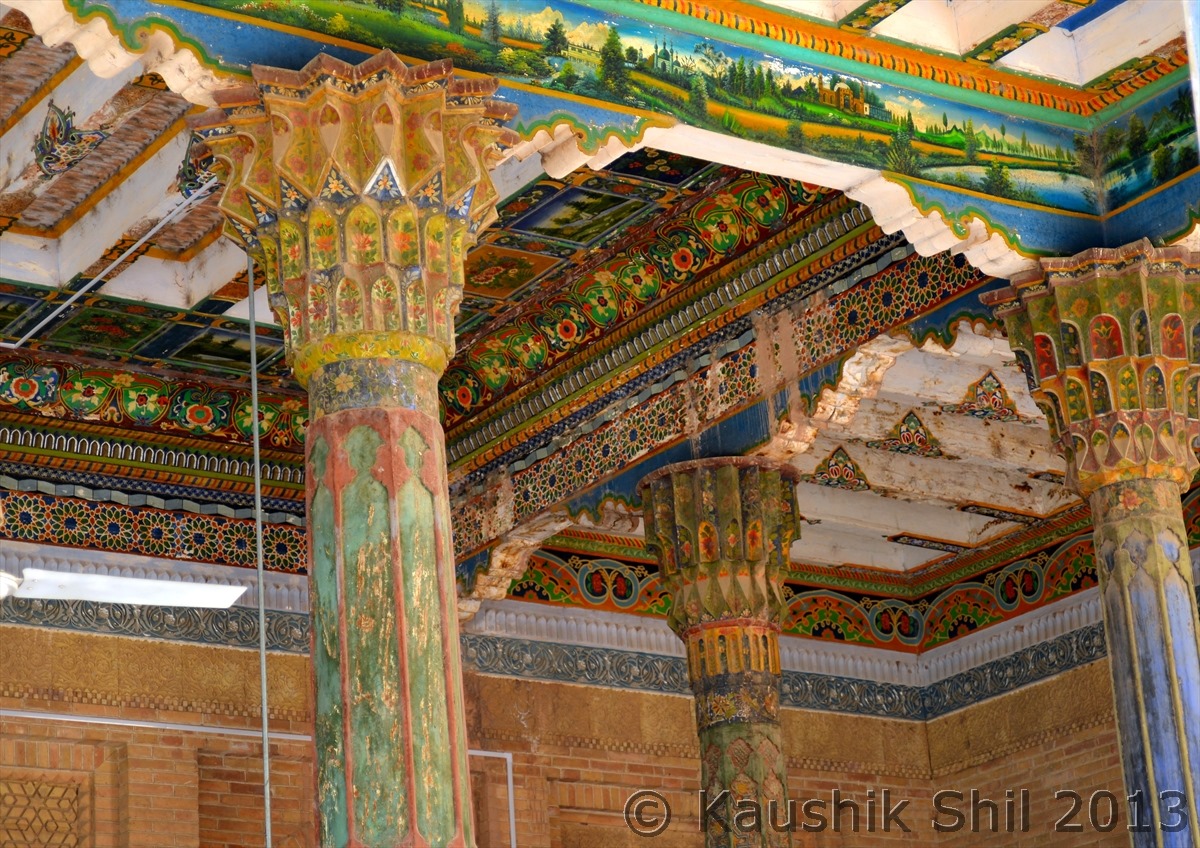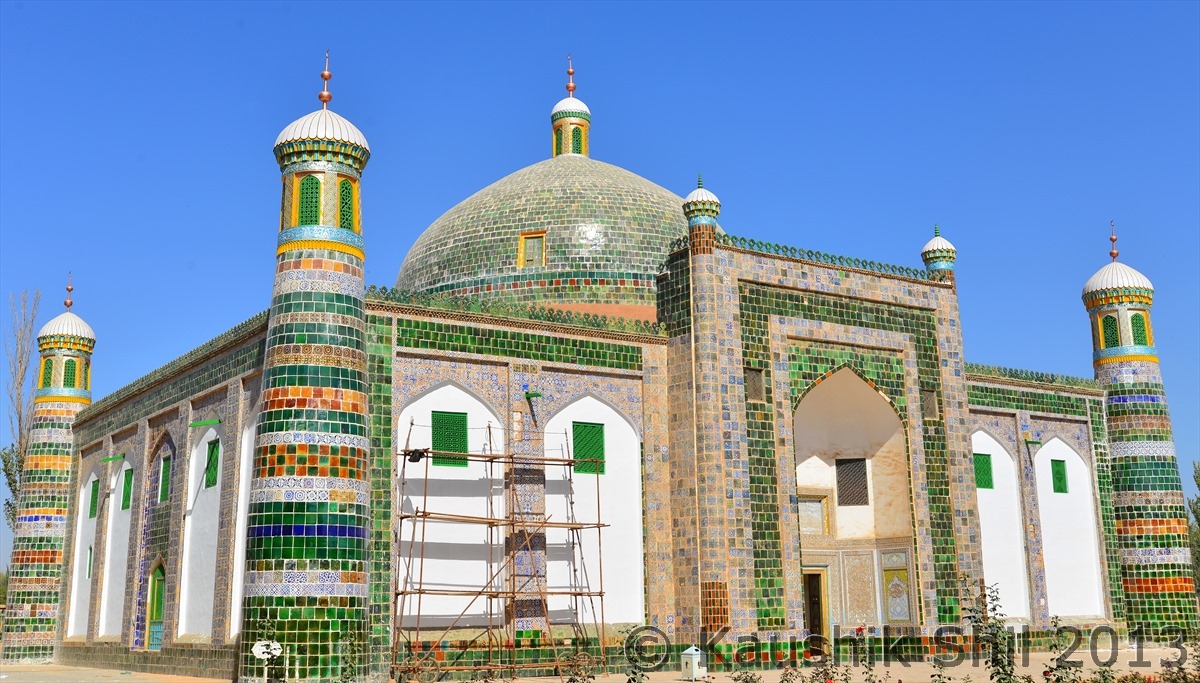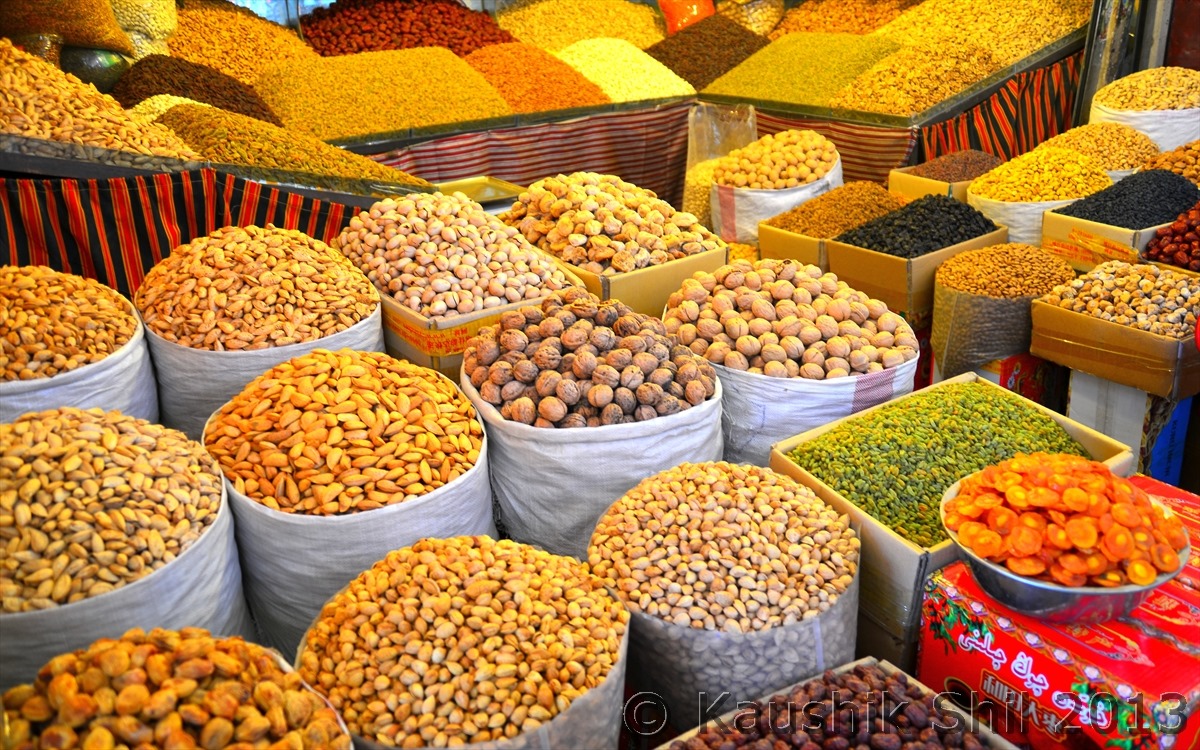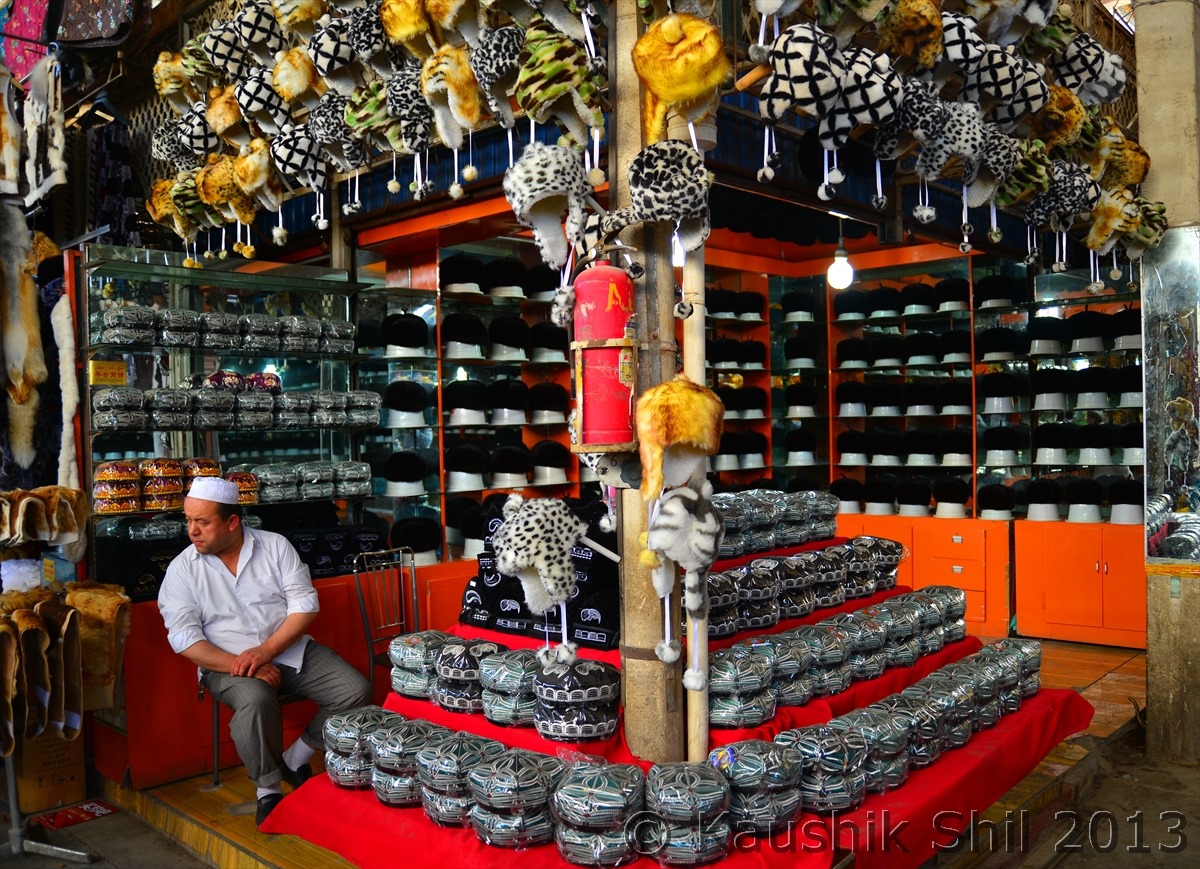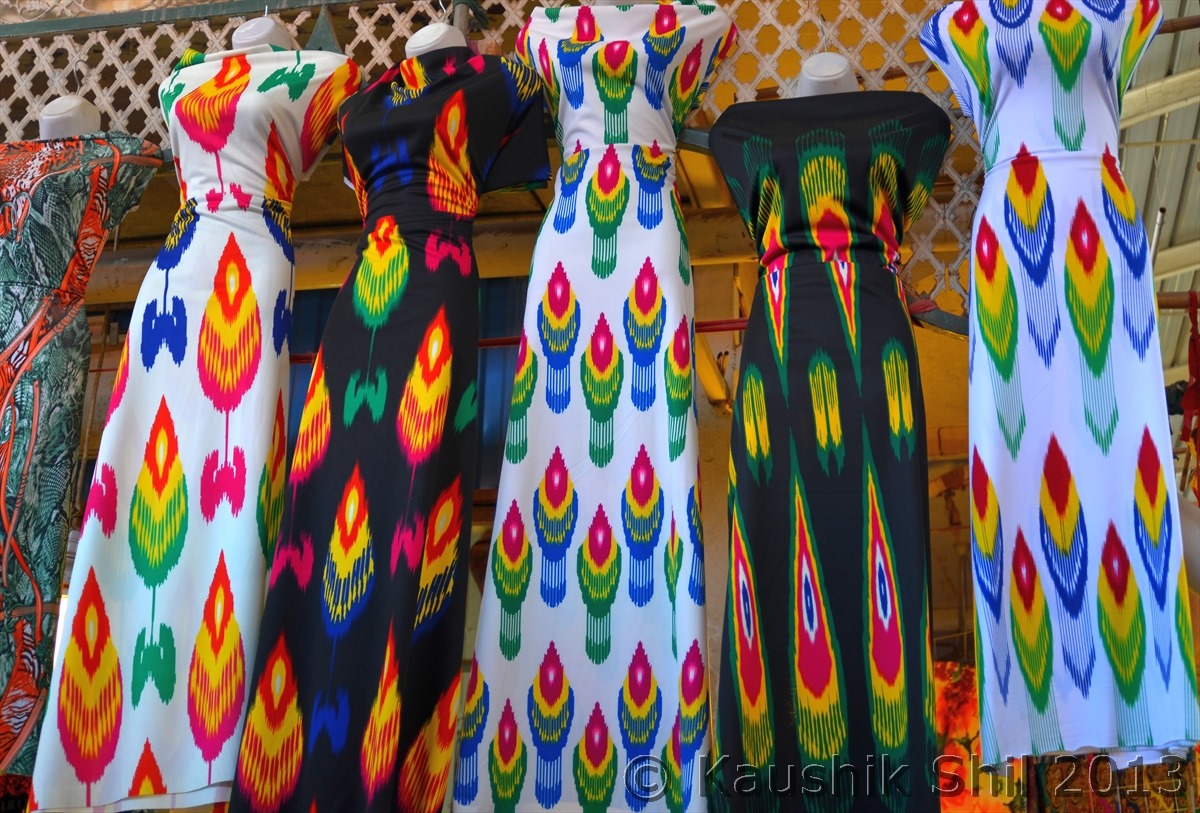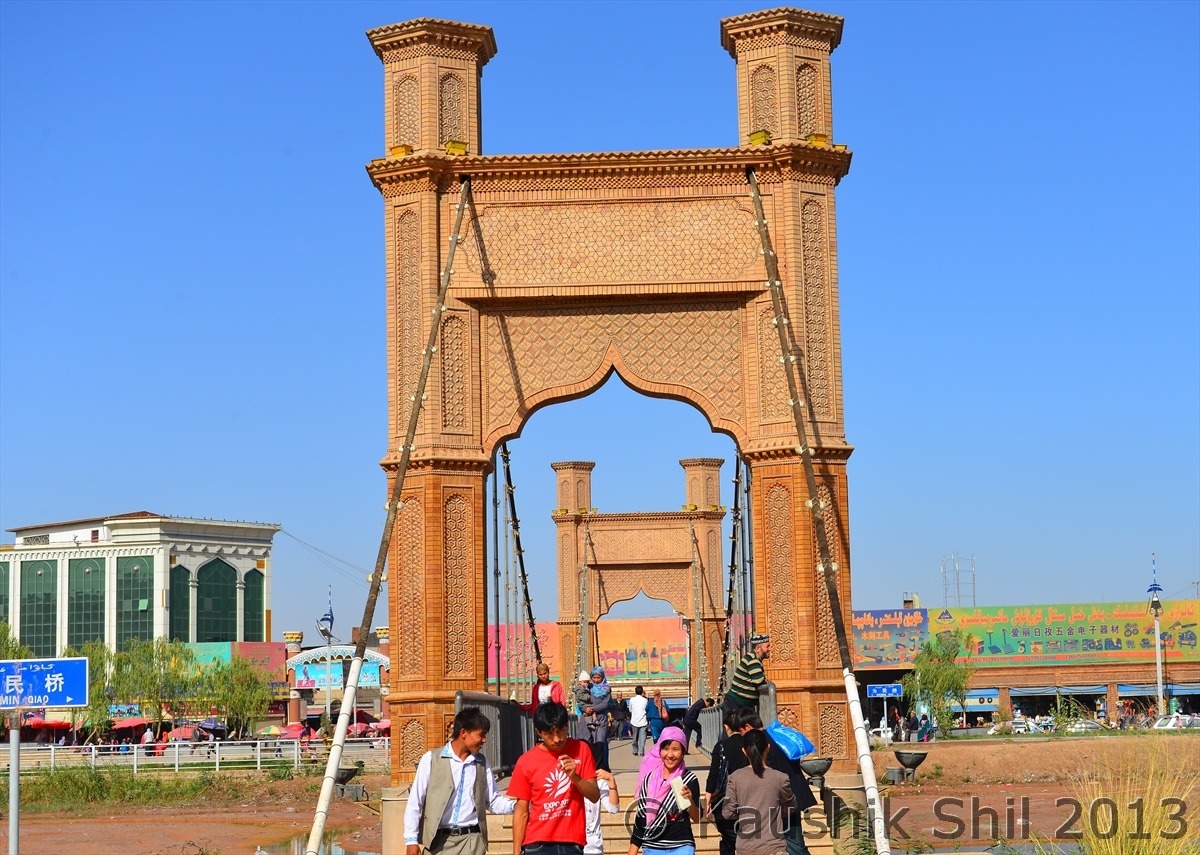Day 16:
This was our full day stay in Kashgar and our main attraction of the day was to visit World’s oldest and largest Livestock market at Kashgar and then visiting the Sunday Market, Idkha Mosque, largest mosque in China and the Abakh Khoja tomb. If you really want to see livestock market, which looks very interesting to me, you must need to spend a Sunday there and we have planned our trip accordingly. Kashgar is the largest oasis city of Xinjiang and 70 percent of the population is Uighur which makes it not so comfortable destination for Han Chinese and that’s the reason I planned this place during the Golden Holiday Week of October to get escaped from mad infamous tourist rush of China.
Kashgar’s historical importance is derived from its strategic location at the foot of Pamir, Kunlun and Karakoram Mountain ranges, commanding access to the high glacial passes of the Silk Road Routes into Central Asia, India and Persia (Via Tajikistan to Iran). The trade caravans from China heading towards west on the northern and Southern route through the rim of Taklamakan desert finally meets at Kashgar and similarly caravan towards East from Central Asia and India meets here after descending Pamir and Karakoram. Kashgar’s history spans over 2000 years and both Buddhist and Islamic culture started spreading their wings in Tarim basin in second and tenth century respectively from Kashgar only.
Our first visit of the day was to Livestock market, stated to be world’s oldest and largest livestock market, still have a very much Central Asian flavor with cacophony of color, sound and smell on a scale found nowhere else in Xinjiang and even in any other Central Asian City. On Sunday Livestock market starts at dawn when traders begin to bring animals in, stalls are setup selling foods, drinks, tourists souvenirs near the entrance and in main markets wooden posts are lined up with yaks, cows, bulls, camels, sheep, goats, donkeys and horses, all for sale at right prices. This is a must visit just to experience the ancient market flavors of Central Asia, you would feel that you rode a time machine and back thousands of years in past to the full glory of silk route trading.
Our next attraction was the Kashgar Bazaar, named as Central Asia International Grand Bazaar has many sections in the market selling silk, cotton, knives, hats, pots and pans, fresh vegetables, dry fruits, spice and many other things. You would get costly carpets to cheap musical instrument and see Uzbeks, Tajiks, Kyrghiz, Kazakh, Pakistani and Turkish traders apart from Uyghur.
We gone to Idkah Mosque next which is largest mosque in China and most holy sites of Muslims in Xinjiang is also regarded as religious and cultural center of Kashgar. Thousands of people daily visit this place to offer prayer. It was built in middle of Fifteenth Century on almost an area of 17000 sq meters. One point to note like all important religious places in China, Imam of this mosque is appointed by Chinese Govt and operates under full control of Chinese Govt. No where in China bigger Mosques or Monasteries can elect their Imam or Head Lama, it’s selected by Chinese Govt. based on certain criteria best known to them.
Our last visit of the day was Abak Khoja’s tomb is holiest place in Xinjiang for Sufis and an architectural treasure, built in middle of seventeenth century it is reminiscent of Central Asian artistic style of Samarkand. Abak Khoja was the powerful ruler of Kashgar, Hotan, Yarkhand, Aksu, Kuqa to Korla and a greatly respected Sufi leader of seventeenth century. Five generations of this great family were buried here.
Kashgar still carries the memory of great game between two imperial forces of early twentieth century, British and Russians. The old British Consulate was the home for almost quarter of a century of the most famous British India’s representative in Kashgar, Sir George McCartney and his wife. The consulate is now transformed to one of the most well known hotels of Kashgar (Qinibagh, pronounced as Chinibagh hotel) where fortunately we got a chance to stay for 2 nights. The Russian Consulate is now transformed to another hotel Seman hotel still carries the Russian Architecture.
Today was our last day in Southern Xinjiang and tomorrow we would fly back to Urumqi.
Gate of Livestock Market:
Camel sales at its height because of Bakri Eid!!
Sheep Line:
Sheep is dragged from the van and put them in a queue:
Horses for sales:
Sheep are in Queue:
Few different shops selling souvenirs and other interesting things:
Famous Uighur knives made in Southern Xinjiang (Yengisar is specially famous for making knives):
Idkah Mosque Entrance:
Idkah Mosque Complex, heart of Cultural Kashgar:
Beautiful shop and even prettier shopkeeper:
Typical Uighur Shop:
Dry Fruits market – Kashgar:
Musical Instruments:
See the woodcraft all are handmade:
Abakh Khoja Tomb:
This is made of Samarkand Style architecture:
Kashgar Sunday Market:
Kashgar Town:
Previous: Day 15
Next: Day 17 and 18
